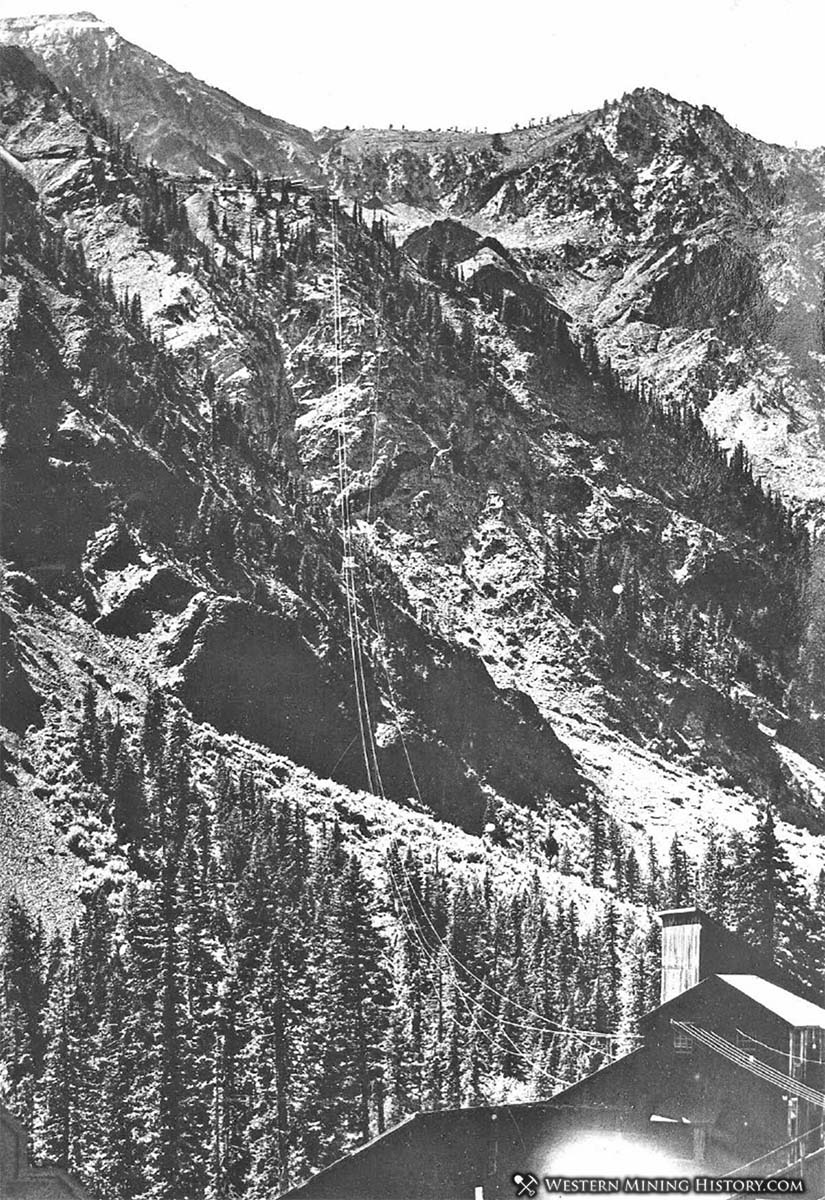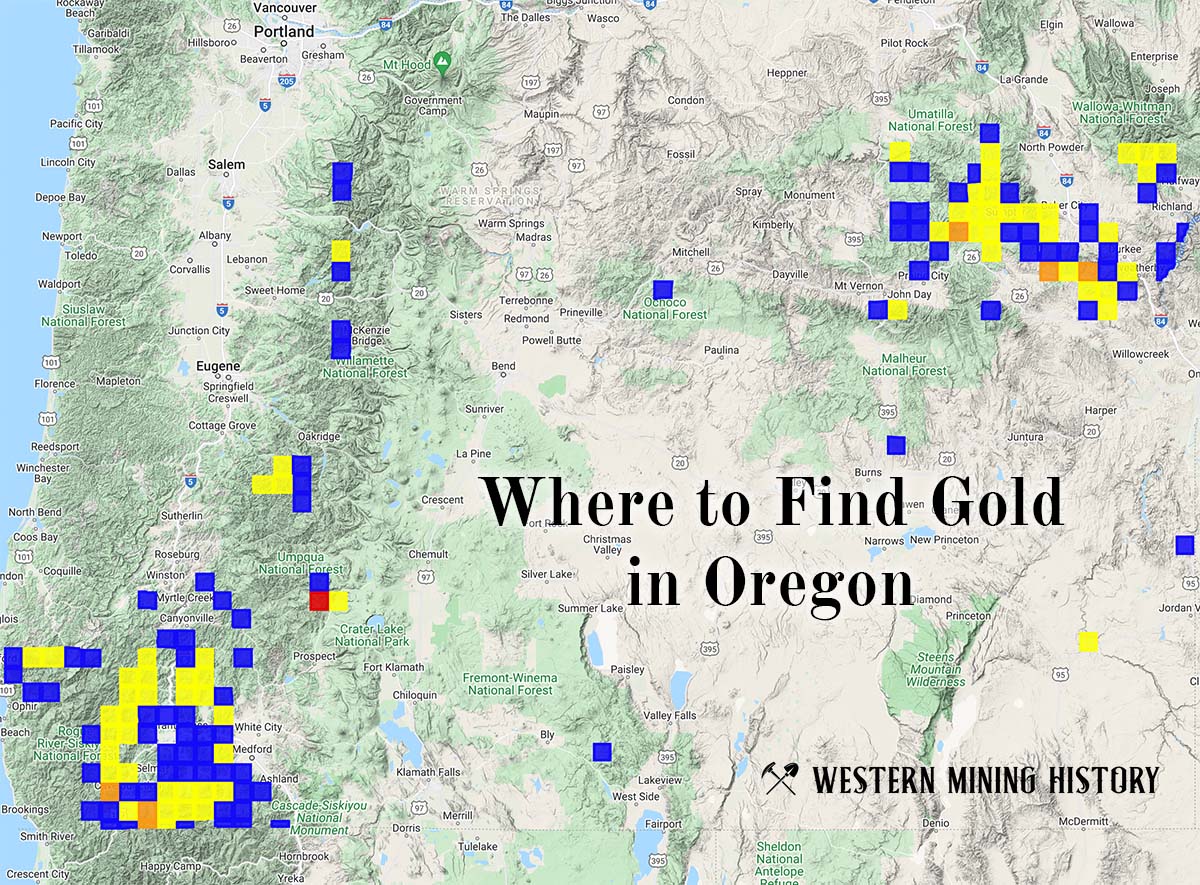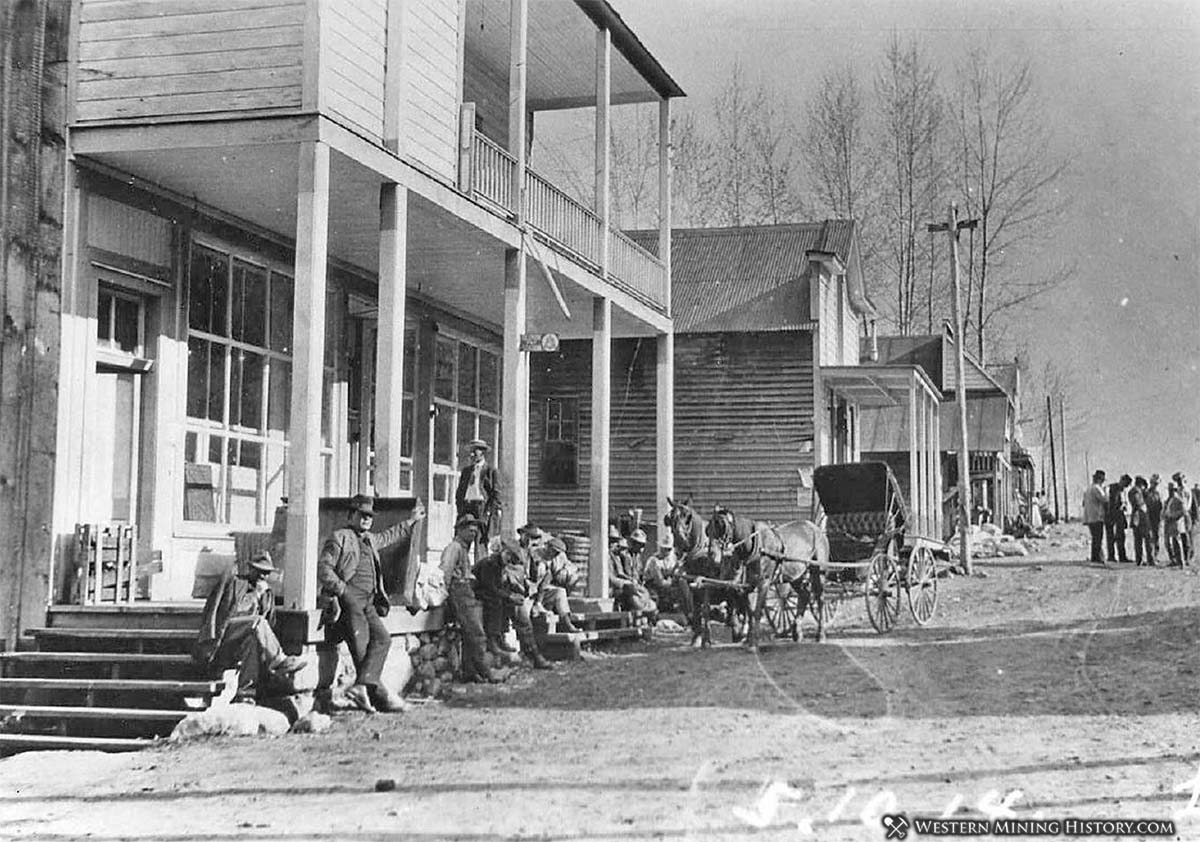Cornucopia History
Cornucopia is unique among Oregon gold camps in that it sits in a rugged mountain valley that resembles some of the alpine camps in the Rocky Mountains. The steep terrain necessitated the use of an elaborate aerial tram, much like the trams common in Colorado. Cornucopia endured extremely harsh winters with deep snows. Millions of dollars in gold was mined in the district starting in 1885 and ending during World War II.

While some sources state gold was discovered here in 1880, newspaper articles seem to indicate that the first lode deposit was discovered in 1884. Lower in the valley, where Pine Creek exits the rugged mountain terrain, placer gold was hydraulically mined starting in 1884 or 1885. It is possible that smaller scale placer mining occurred prior to 1884, but it would have been unrelated to the settlement of Cornucopia.

Initially the mining district was known as Pine Creek, and two adjacent camps, Cornucopia and Allentown, competed to be the central settlement of the mines. Ultimately Cornucopia absorbed its neighbor, and in latter years the district was also known as Cornucopia.

A September 1888 edition of the Portland Morning Oregonian described the early settlement: "The little town of Cornucopia has rapidly assumed larger proportions until its boundaries joined with Allentown, a rival camp, and the prospects bid fair of the two places converging into one lively, thriving town."

A 1922 edition of the Oregonian newspaper that was promoting tourism to the area gives a brief description of Cornucopia:
"Cornucopia is an old mining camp, covered deep with snow in winter but open and delightful in summer. It is the center of the richest gold section in Oregon. In its career of 40 years as a gold camp it has seen approximately $7,000,000 of gold taken out of the mines. It is rich in legends, stories of wonderful strikes, lost fortunes, destructive snowslides, feverish booms and all the other stories that hover around mining camps. The tourist who stops there can almost dream the stories from the surroundings."

The mines struck additional rich gold ore in 1915 and again in 1921, which kept the town active for many years. A 1915 article from the Eugene Morning Register described the prosperity at the camp:
"Cornucopia is the greatest gold camp in Oregon, says the Pine Valley Herald. Its population is about 400 and growing rapidly. There are but two large properties operating at the present time - the Union Companion, owned by the Cornucopia Mines company, of New York, with Robert M. Betts local manager, and the Last Chance mines, owned by the Baker Mines company, with principal offices at Cornucopia."

The 1929 stock market crash ended good times at Cornucopia with the 1930 census counting just 10 residents.
The mines recovered by the mid-1930s and the 1940 census put the local population at 352. World War II brought the end to Cornucopia when gold mining was prohibited by the government. The town was abandoned and the mines remained silent.
Cornucopia had a post office from 1885 to 1942.
Mines of the Cornucopia District
Although there were many gold mines in the Cornucopia district, the primary producers were the Union-Companion and Last Chance mines. According to a 1914 report by the Oregon Bureau of Mines and Geology:
"The Union-Companion, Red Jacket and Last Chance claims produced $1,008,000 previous to 1903. Estimating the years 1906, 1908 and 1914, and taking the official figures of Charles G. Yale, of the United States Geological Survey for the other years since 1903, the entire production to January 1, 1915, for the district is in excess of $2,500,000."
The text in the mine descriptions below is from the 1914 report mentioned above.
Union-Companion Mine
The gold bearing veins of the Cornucopia district were discovered about 1880. The nearest railroad at that time was the main line at Baker. This distance to railroad transportation, together with the isolation of a snowy mountain camp, caused production to be intermittent for some little time. The strikingly favorable appearance of the veins attracted investors, and early in 1895, although but slightly developed, the Union-Companion claims were sold for $60,000. The purchasers proceeded vigorously with development and installed a 20-stamp mill and chlorination plant to treat the ore. The latter proved to be unsuitable and was abandoned.

The method followed from this time on was by the customary method of crushing with light stamps, amalgamating, and concentrating, with a canvas plant for the tailings. The mill was built in 1896 and succeeded in extracting only about 65 per cent of the values.

Owing to the fact that the mine is situated 25 miles from a railroad, the hauling, together with smelting charges on the concentrates, combined with the low extraction, made it very difficult to keep the property on a paying basis. It was therefore decided that, if possible, the ore should be treated by cyanidation, thus eliminating outside charges on concentrates and at the same time making a better recovery of the metals contained in the ore.

Tests showed that a satisfactory extraction could be obtained by grinding fine, and treating the product by agitation and filtration. Accordingly, in June, 1912, construction on the cyanide plant was started. The crusher, ore bins and stamps of the old mill were left intact, and only such changes were made to the mill buildings as were necessary to accommodate the new machinery. Since the completion of this plant, March 1, 1913, the production has been steady and profitable.
Last Chance Mine

This property, until 1914 a part of the Cornucopia Mines, was operated only in a small way by the company or by leasers. These operations were spasmodic and did not extend the development to any great degree. The last work, which was done by leasers milling their ores at the Union-Companion mill, was successful in finding ore of sufficient grade to stand the heavy expense of wagon transportation to the mill. Unfortunately for them their lease expired November 1, 1913, which came too soon after the finding of the rich ore to get more than a small part of it to the mill to reap the profit for themselves.

The finding of larger and better grades of ore than were already known to exist encouraged certain western and New York persons, largely of the same group already in the Cornucopia Vines Company, to form a strong leasing company to take over the Last Chance vein. This new company, with John J. Baker as general manager, is called the Baker Mines Company.

It perfected its organization last winter and arranged for the financing of the development work in the mine, the erection of a surface plant at the mine, an aerial tramway, a water power plant, and a 20-stamp mill with a sand and slime cyanide plant. This work was started early in the spring and late in October they commenced to mill their ore.
They have also acquired claims adjoining them in the Bonanza basin upon which it is said the development is decidedly encouraging.

Aerial Tramway — The ore is conveyed to the mill by means of a Bleichert aerial tramway 5,500 feet long. The difference in elevation between the loading and discharge terminals is 1,675 feet. There are only two intermediate supports for the cable. The upper span has two locked-coil track cables 616 feet long, one is 1-1/8 inches in diameter and the other 7/8 inch. The middle span has two similar cables each 1,410 feet long; while the third span has two cables 3,210 feet long of 138 inches and 11/8 inches in diameter respectively. This span has a clearance of over 500 feet above the bottom of the gulch. The traction rope used is made of special cast steel. This tramway when operated at a speed of 500 feet per minute has a capacity of 15 tons of ore per hour.

All photos on this page were sourced from the Baker County Library digital archives.
Oregon Mining Photos

Check out this collection of some of Oregon's best historic mining scenes at A Collection of Oregon Mining Photos.
Oregon Gold

"Where to Find Gold in Oregon" looks at the density of modern placer mining claims along with historical gold mining locations and mining district descriptions to determine areas of high gold discovery potential in Oregon. Read more: Where to Find Gold in Oregon.
